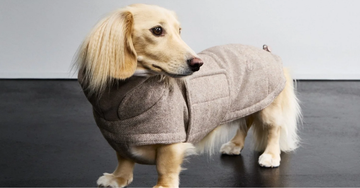Are you in control – or is your dog?
It's important for both of you, because I'm talking about BODY CONTROL.
I won't get involved in how YOU stay "fit for a fight", but I would like to give you some good tools to equip your dog much better to cope with everyday hardships. There are actually many of those for a completely normal family dog. Stairs, curbs, pulling on the leash, up on the couch, down off the couch, in the car, out of the car, running, playing, romping and a whole lot more.
The “sixth” sense
The sixth sense, in this context, is neither a terribly scary movie with Bruce Willis, nor something that you can't quite put into words. It is "the proprioceptive sense."
Proprioception is our perception of the body's position/direction and movement in space; body control. For example, the ability to quickly get your ankle back on track when you have twisted or stepped incorrectly is controlled by the proprioceptors.
Therefore, it is super important that the proprioceptors are in good shape to avoid damage to muscles, tendons and ligaments. If you stimulate the proprioceptors, you also strengthen the small joint-stabilizing muscles in the vertebrae.
Balance exercises at home
One way to get your dog's proprioceptors to work is to let your dog walk across an uneven surface. This could be an air mattress, a Fat Boy, a regular foam mattress, or just across the bed or sofa. You can let him walk after a treat that you hold back a little so that he can turn around and walk back and forth a few times before being rewarded. It is important that your dog walks with slow and controlled movements.
You can let the dog stand still in between, and slowly move the treat – first to one side – then to the other. This means that it has to move a little to get the treat, and here you will be able to clearly observe, especially if your dog is short-haired, how the muscles in the upper thigh are constantly working during the exercise. You can spend 5-10 minutes on the exercise – with small breaks in between. If your dog starts to sit down or lose focus – then it is probably tired, and it is time to stop. Dogs should not be trained according to the “no pain -no gain” principle.
Confused? Watch the video here
Balance exercises while walking
On your walk, you might find some forest floor or take a walk on the beach and let your dog walk in the sand – it’s also excellent balance and stability training. Remember to take breaks – it’s really hard to walk in soft sand.
Increase difficulty
Once your dog has gotten stronger, you can do the exercises several times a day, and you can increase the difficulty by, for example, placing pillows on top of the mattress, or placing a regular foam mattress on top of an air mattress. Just remember to pay attention to your dog's signs of fatigue.
In JYSK, for example, you can buy small inflatable pillows that are great to put on top of a mattress, or just on the floor together with some regular pillows, so that your dog, when walking across it, constantly has to deal with a new surface.
Decreased proprioception
Age, arthritis, pain, fatigue and injuries can contribute to a dog's lack of or disturbed perception of body position/direction and movement. You should always consult your veterinarian if your dog needs rehabilitation after an injury. The veterinarian will often refer you to a canine masseur or canine physiotherapist, who are trained to create rehabilitation programs and exercises tailored to the individual dog.
Ask away
I will return with more exercises, and you are always welcome to ask if you are in doubt about an exercise or want more exercises. I can be found in Butik Hunni once a month, and on my Facebook page, GladeSnuder-Hundemassage, you can join the group " Stability & Body Control" , where you can find videos from group training in "Stability & Body Control". You can find the group here
Potato bag from
Rikke from GladeSnude





